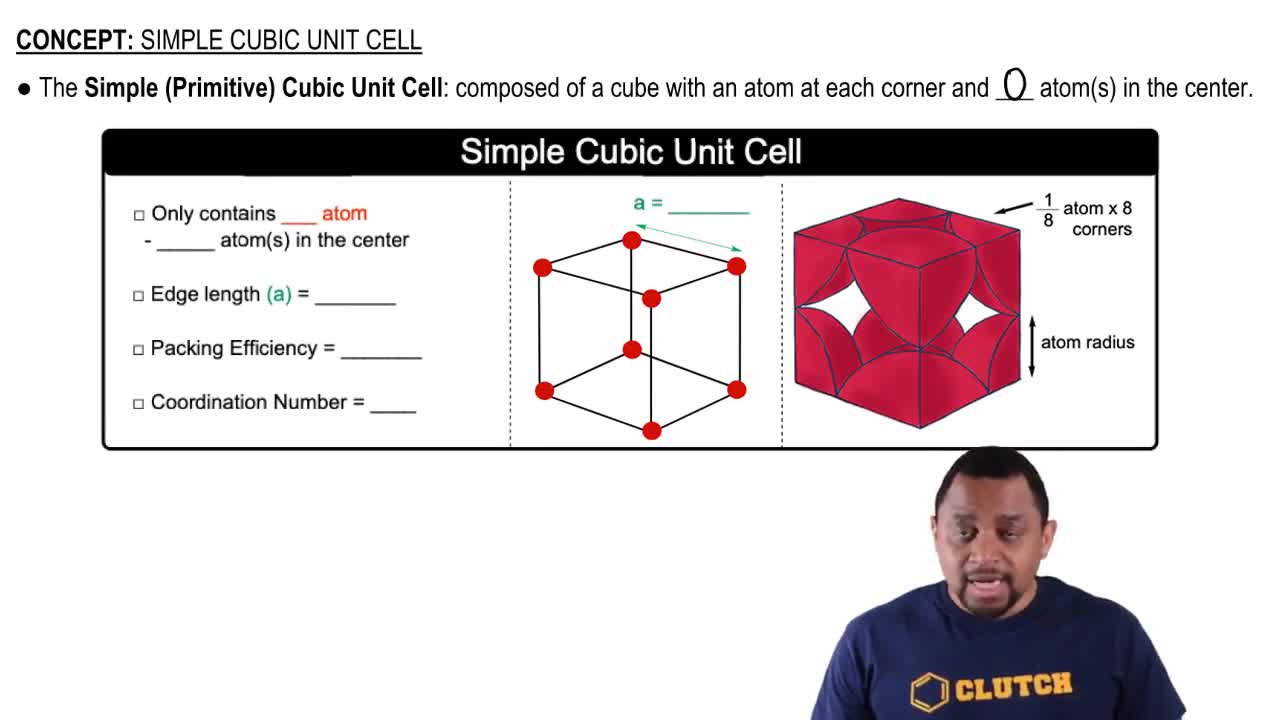A cube-shaped crystal of an alkali metal, 1.62 mm on an edge, was vaporized in a 500.0 mL evacuated flask. The resulting vapor pressure was 12.5 mm Hg at 802 °C. The structure of the solid metal is known to be body-centered cubic. (c) What are the densities of the solid and the vapor in g>cm3?
The mineral wustite is a nonstoichiometric iron oxide with the empirical formula FexO, where x is a number slightly less than 1. Wustite can be regarded as an FeO in which some of the Fe sites are vacant. It has a density of 5.75 g>cm3, a cubic unit cell with an edge length of 431 pm, and a facecentered cubic arrangement of oxygen atoms. (c) Each Fe atom in wustite is in either the +2 or the +3 oxidation state. What percent of the Fe atoms are in the +3 oxidation state?
 Verified step by step guidance
Verified step by step guidance
Verified Solution
Key Concepts
Nonstoichiometric Compounds

Oxidation States

Density and Unit Cell Calculations

The mineral wustite is a nonstoichiometric iron oxide with the empirical formula FexO, where x is a number slightly less than 1. Wustite can be regarded as an FeO in which some of the Fe sites are vacant. It has a density of 5.75 g>cm3, a cubic unit cell with an edge length of 431 pm, and a facecentered cubic arrangement of oxygen atoms. (d) Using X rays with a wavelength of 70.93 pm, at what angle would third-order diffraction be observed from the planes of atoms that coincide with the faces of the unit cells? Third-order diffraction means that the value of n in the Bragg equation is equal to 3.
Small molecules with C=C double bonds, called monomers, can join with one another to form long chain molecules called polymers. Thus, acrylonitrile, H2C=CHCN, polymerizes under appropriate conditions to give polyacrylonitrile, a common starting material for producing the carbon fibers used in composites. (a) Write electron-dot structures for acrylonitrile and polyacrylonitrile, and show how rearranging the electrons can lead to formation of the polymer.
